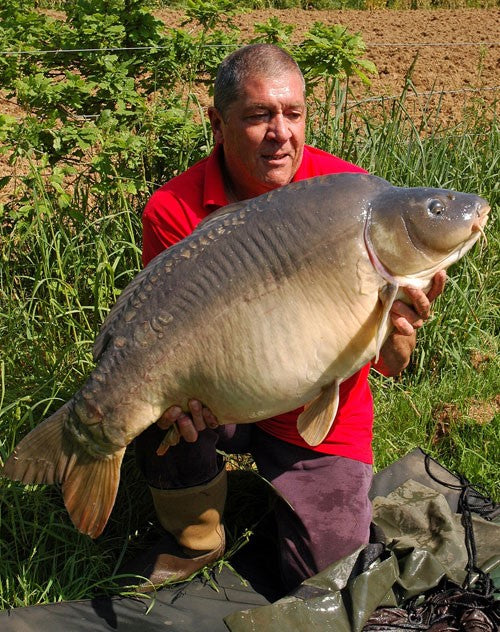Let's continue my brief look at some more aspects of what we call watercraft. For many angler's watercraft is only about using your eyes and looking at the lake, observing as best you can the way carp move about the lake, where they go to eat, and rest.
Well to a certain extent that is very true, but there is a bit more to watercraft than just watching the water.
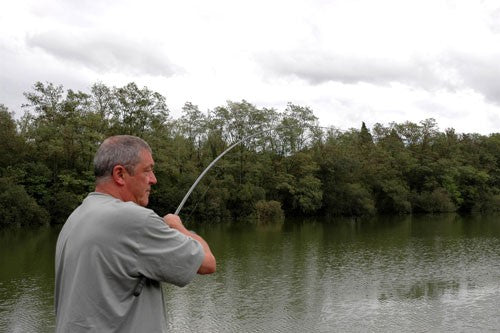
I mentioned previously that carp favour different areas for various activities. Clearly the ones we are interested in are the feeding areas, but these are often linked by patrol routes. Identifying these routes is one of the keys to successfully catching carp, as fish move about the lake from one area of natural food to another and can often be ambushed while on patrol. The tree line behind me in this photo is a known patrol route for the lake’s carp and they cruise up and down it for long periods of the day. In fact the carp I am playing in the photo picked up a hookbait placed tight at the foot of the bush that you can see in the middle of the photo.
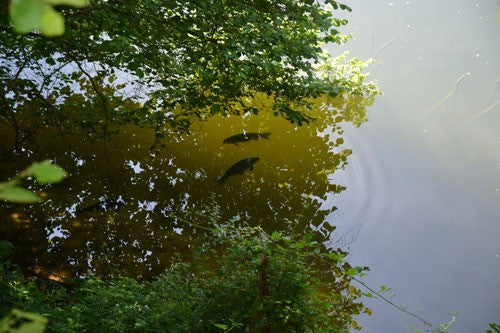
Carp also like to find areas that they consider safe and the cover of overhanging trees often draws them. If there are underwater snags present as well, so much the better. If you can present a bait safely in such an area, there is a good chance you will get a take, as the carp does not see the hookbait as a threat. However, never, ever place a bait in an area where you do not stand a near 100% chance of getting the fish clear of the snags. Anybody can hook fish after fish in the snags and loose them all but where's the skill or the pleasure in that?
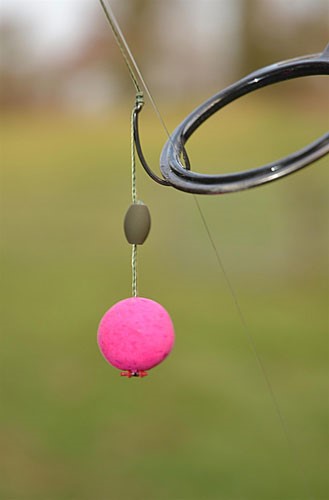
But though they use certain routes with as much familiarity as we would use the route to work each day, it doesn’t necessarily mean that they cannot be caught while on patrol. You might stop at the same cafe for breakfast every morning on the way to work and just like us, carp will often stop in the same area along a patrol route on a regular basis. After all, they need to eat, and they can sometimes be tempted to feed in an area without it necessarily being an area that is rich in natural food, or even a recognised feeding zone. This is where a single high attract hookbait might come into its own, as shown here.

Carp are naturally very adept at finding food so if you can find out where they feed you will have done half the job. But remember, a carp doesn’t necessarily have to be feeding on your baits alone to become a target so discovering natural food larders and feeding areas and the routes that connect them is very important.
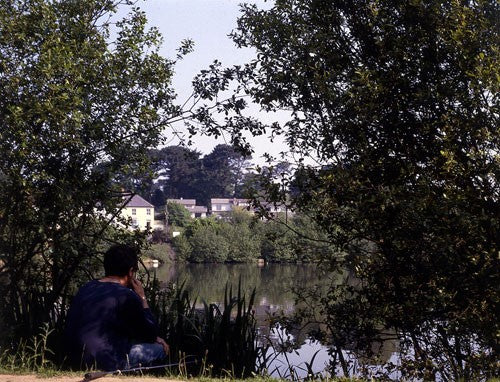
Carp are pretty predictable creatures and they use the same patrol routes day after day. If you are able to spend some time on a water it should not take long to work out a rough behaviour pattern. Even on large lakes it is quite easy to judge where the fish will be at different times of day, and if you can practice on small waters, then larger ones will not seem so daunting.
I learned the importance of finding these feeding areas and the patrol routes linking them at a small park lake not far from my home. It is only a couple of acres in size and being so small and relatively shallow, after a few trips and some hours spent up the up the spotting trees I soon got a an idea of where they would be at say, mid afternoon, or where they might go for a feed in late evening.
The basis of what we call watercraft is knowing how carp are likely to behave under certain conditions. Therefore time spent watching then in their natural environment is never wasted. The small lake gave me the perfect opportunity to practice my watercraft, as the fish were not hard to spot and provided you keep yourself quiet and concealed they would come to within inches of the banks.
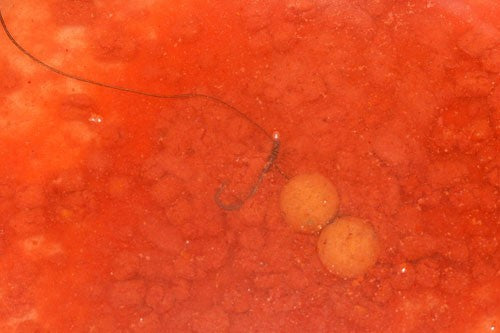
Once found the fish were comparatively easy to catch using a tactic I called at the time Boilie Soup. Nowadays I have refined this approach thanks to Robin Red Pellets and these days Pellet Soup forms one of the key elements of my carp fishing.

Once of the most exciting and revealing ways of margins fish is with a float, especially when using the Soup. To see the often quite vigorous swirls coming up from beneath your float tip is the ultimate thrill in carp fishing, for you just know that the bait is going to be picked up at any minute. That is my float tip right in the middle of the photo - you can just about see it! The rod is resting on the reeds. No need for all the high tech stuff here!

I am sure that you will be able able to create you own boilie or pellet soup using the ingredients of your choice. You could use one or more of the ProBase boilie mixes or use the pellets. Whatever you use, one thing I can assure you, the tactic works a treat, even in the depths of winter.

As I mentioned earlier, it is best to hone your watercraft skills on small venues. Then you will have the confidence to take them on a step further, perhaps onto larger venues when you cannot see the fish or the lakebed so well and you will have to rely a great deal on experience and the Mk 1 eyeball! Nothing can compete with it when you wish to develop good watercraft skills by watching the water at dawn and dusk. The water at le Queroy, the lake in this photo, is predominantly murky and visibility down through the water t able is seldom possible. So under these circumstances there is nothing that beats the good old Mk 1.
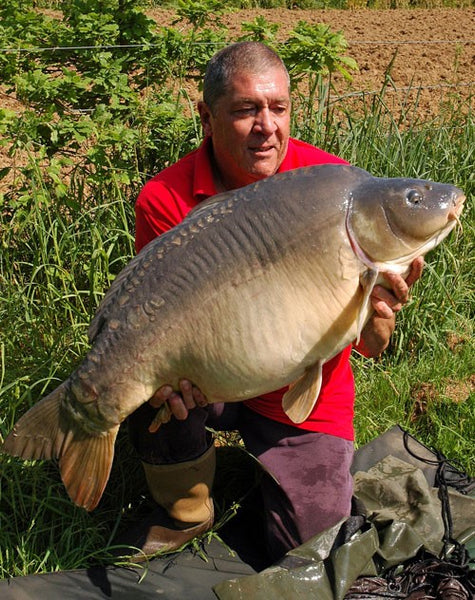
Though you might spot fish at the 'dimps' (dusk and dawn as the light is changing) you may not necessarily get a take then. However spotting at fish head and shouldering over your bait is always a good sign whatever the time of day, and even if a chance doesn't come along soon after, you can be sure that sooner rather than later you will get a take. It's just a case of remembering the spot where you saw the fish and keeping a bait there awaiting its return. This fish came from the dam wall, which you can just about see off to my right in the previous photo.

Learning the ropes on a small lake certainly helped me when I moved onto a large west country reservoir. I look at it like this: carp are carp, and if you know how they will behave under a specific set of conditions on a small water, then it is highly likely they will do the same on a much bigger lake. This is especially true when it comes to dealing with the problems posed by weed. For instance, if you have seen for yourself how carp behave when feeding in holes in the weed on a small venue, you will have a pretty good idea how they are going to feed when you cannot actually see them. Here the weed beds at the reservoir start some 80m out, but having watched the carp feed right under my feet on smaller lakes I was able to position my baits at range with as much confidence as if I were fishing the margins.

Fishing big waters has also taught me the important watercraft lesson that carp don’t read textbooks! Now I am willing to bet that nine out of ten of you looking at this photo would say that these are ideal conditions on a big lake. Strong warm wind from the south, plenty of heavily oxygenated water crashing onto the lee shore… Surely a recipe for success? Not necessarily. Many of the reservoir carp, for instance, resolutely refused to follow the wind and would hang around at the tail of the breeze.
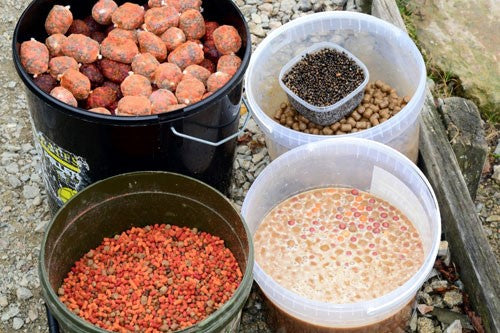
You should also consider your bait; the amount you use and how you use it. Small bait carpets and insubstantial little piecemeal food packages are all very well for a single bite, but they may not be enough to grab the carps' interest sufficiently to halt their progress around the lake for more than a few minutes. Therefore don’t be afraid to put a bit of bait in, enough to stop a shoal of patrolling carp in its tracks. It can be particle, pellets seeds, boilies or a combination of all three just as long as there is enough of it to attract their attention.
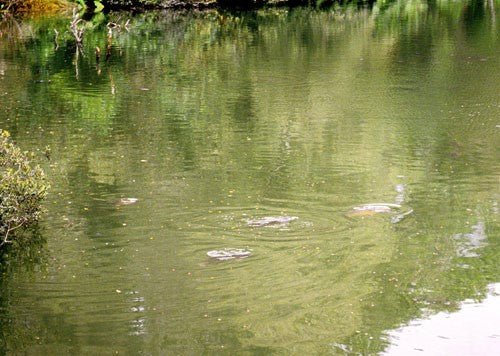
Carp can be caught in many different spots but it has to be said that out of bounds areas are true chill out zones. This is an area on a local lake where the controlling club has provided a safe haven for the carp by stretching a rope across the surface. The carp are totally at ease on the 'safe' side of the rope and will feed without hesitation. There are twenty-eight carp feeding on the surface in this photo! Of course, out of bounds areas are usually there for a reason and in this case it is to protect the carp from idiots who were casting into some spiteful snags. OK, it can be frustrating to see them giving you two fingers but as mentioned previously,if you cannot be more or less certain of getting them out of the snags, then you shouldn’t be casting into them in the first place.
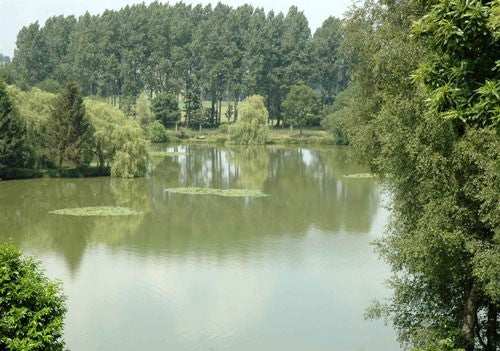
I have recently been fishing an estate lake. Like so many of its kind pads are the dominant feature. They are carefully controlled so as to give the anglers large gaps in which to position their baits and nine out of ten anglers cast into or close to the pads. However, they don't always play by the rules and I found out quite quickly that in fact they were more likely to feed and pick up a hookbait in the clearer areas between the pads.

This lovely common came from the centre of the lake well away fro any of the bunches of pads you can see in the previous photo. Could it be that they felt more confident in open water purely because the majority of anglers targeted the pads? I think so!

I mentioned previously that watercraft is seen by some as a sort of instinctive process, a sixth sense, fine-tuned to assess a lake at a glance. There is no doubt that such anglers exist, but for us mortals we need to rely on other aspects of carp angling such as pure luck? This French lake is predominantly a leisure water and the angling is very strictly controlled with lots of out of bounds areas and other restrictions. You walk onto its banks and stare out and ask yourself, “where do I start?”
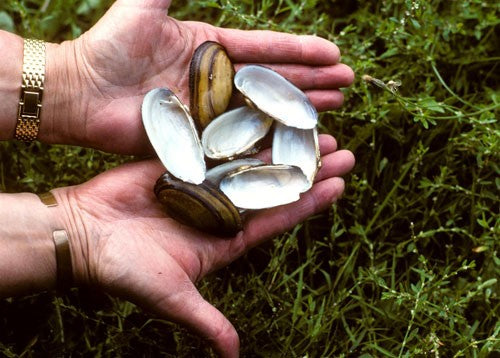
Well in this case finding the areas of natural food was the key to locating the fish and once I had found big areas of mussels in particular but also snail beds and banks of silt, the rest was fairly easy. As I said earlier, find the food and you will find the fish.
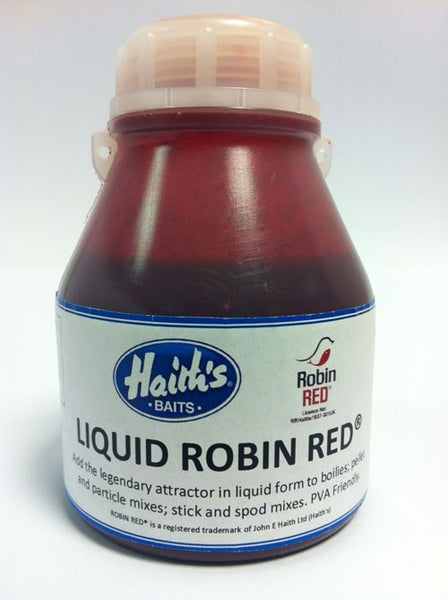
See you soon, and don't forget the new Liquid Robin Red is now available. Get on it now! :-)
To order your bottle of Liquid Robin Red please click here: www.haiths.com/haiths-baits/liquid-robin-red
Written by Ken Townley.

